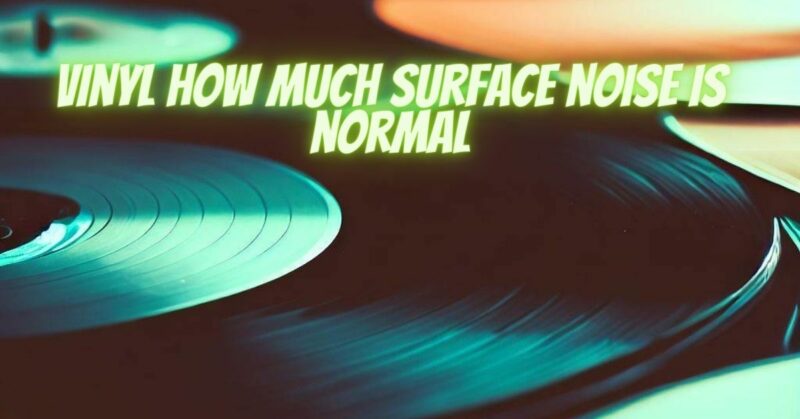Surface noise is an inherent characteristic of vinyl records due to the analog nature of the medium. It refers to the background noise or hiss that can be heard during playback, even on well-maintained records. Understanding the normal range of surface noise in vinyl records can help set realistic expectations and differentiate between acceptable levels and potential issues. In this article, we will explore factors contributing to surface noise and provide insights into what is considered normal for vinyl records.
- Vinyl Medium and Manufacturing Process: Vinyl records are susceptible to various types of surface noise due to the nature of their production. During the manufacturing process, imperfections can occur, such as small surface scratches, microscopic debris, or variations in vinyl composition. These imperfections can contribute to the presence of surface noise.
- Record Condition and Quality: The condition and quality of the record itself can significantly influence the level of surface noise. Well-maintained records with minimal wear, clean grooves, and minimal scratches or scuffs tend to produce less surface noise compared to records that are heavily worn, dirty, or damaged. Regular cleaning and proper handling can help minimize surface noise.
- Playback Equipment and Setup: The quality and condition of playback equipment, including the turntable, cartridge, stylus, and speakers, play a vital role in surface noise. Higher-end turntables, cartridges, and styli often exhibit superior tracking abilities and lower noise floors, resulting in reduced surface noise. Additionally, proper setup, calibration, and alignment of the turntable and cartridge can contribute to minimizing surface noise.
- Recording Quality and Production Techniques: The quality of the original recording and production techniques used can affect the level of surface noise. Older recordings or those from analog sources may inherently contain more surface noise due to limitations in recording technology at the time. Furthermore, specific genres like jazz or blues may intentionally include a level of surface noise for aesthetic or nostalgic purposes.
- Environmental Factors and Handling: Environmental factors and handling practices can impact surface noise. Dust, static, and debris in the listening environment can contribute to increased surface noise during playback. Similarly, improper handling, such as touching the playing surface or mishandling the record, can introduce additional noise.
- Subjective Perception: Perception of surface noise can vary among individuals. What one person perceives as an acceptable level of surface noise may be deemed too high by another. Personal tolerance and expectations play a significant role in determining what is considered normal.
Conclusion:
Surface noise is a characteristic of vinyl records that should be expected to some extent. The normal range of surface noise can vary depending on factors such as the vinyl medium, record condition, playback equipment, recording quality, environmental factors, and individual perception. While it is difficult to quantify an exact threshold for acceptable surface noise, it is generally considered normal as long as it does not overpower the music or distract from the overall listening experience. By maintaining records properly, using high-quality playback equipment, and setting realistic expectations, you can appreciate the unique analog charm of vinyl records, including their inherent surface noise.


